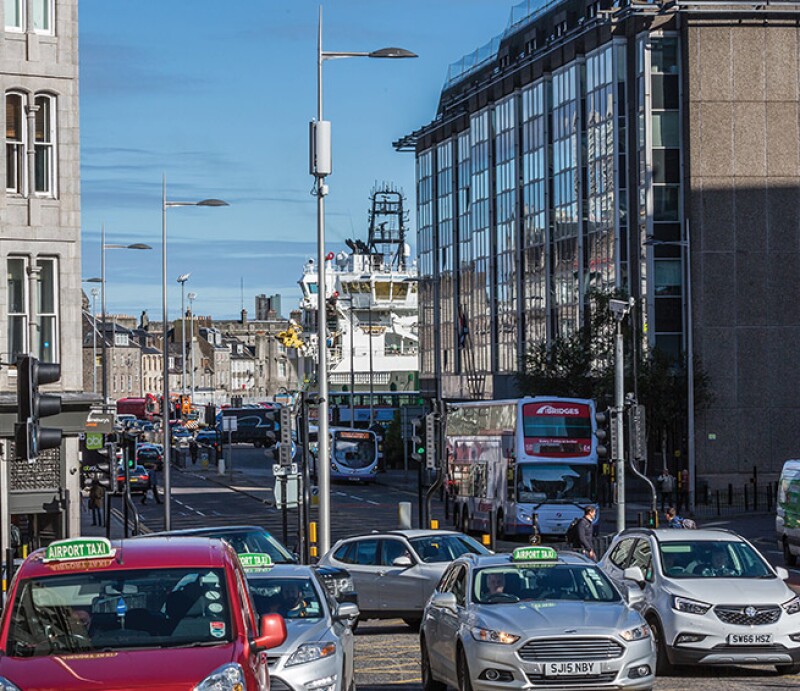As traditional telecom architecture continues its evolution towards IT architecture, and network priorities shift towards the increased speeds and reduced latency required to meet 5G demands, towercos must also evolve and be ready to capture the infrastructure opportunities which will come with enabling this shift.
TowerXchange spoke to Scott Coates, CEO of Wireless Infrastructure Group, about his vision for independent wireless infrastructure at the network edge and how WIG is preparing for new opportunities both through building skill sets and new, collaborative relationships.
TowerXchange: How would you characterise the current telecom infrastructure market?
Scott Coates, CEO, Wireless Infrastructure Group:
What’s interesting is that when mobile networks first rolled out, towers were the primary infrastructure asset, but the independent wireless infrastructure or towerco sector didn’t exist, it came along later. Most of the towercos built their portfolios through sale and leaseback processes. There was some build to suit, but most of our sector’s growth has been through purchasing towers, upgrading them and opening them up for other networks.
What’s exciting about small cell rollout is that it’s a whole new layer of infrastructure which needs to be built and independent infrastructure operators will be there from the beginning. If we can deliver solutions and lower TCO for our customers then our sector should be set to play a significant role in the deployment of small cells. The potential requirement of 10 small cells for every one existing macro could create a market opportunity as large as towers over the next 10-15 years. If you listen to some of the commentary out of Crown Castle it certainly chimes with this view.
I’d characterise the current market for small cells here in the Europe as established and growing rapidly for indoor and early stage or emerging for outdoor. We launched our indoor business five years ago and it has fantastic momentum across a range of verticals. Our customers have really responded to the business model and our commercial approach. We don’t expect to see the outdoor market gather real momentum for another two to three years and certainly by the time we see 5G. However, work is happening now to prepare for this - we are doing smaller scale deployments and using these opportunities to get the relevant building blocks in place (such as the people, skills, assets and relationships) in preparation for wider rollout.
TowerXchange: Tell us about the value you’re adding for your customers and why you’re best placed to roll out small cells.
Scott Coates, CEO, Wireless Infrastructure Group:
Deploying outdoor small cells efficiently involves managing a lot of moving parts. When we were appointed wireless infrastructure partner to the city of Aberdeen for example, we formed a steering group involving several key city departments such as planning, traffic and streetlight management. We worked though as many “what-if” scenarios as possible and shaped new processes for the deployment and operation of our infrastructure that could survive the challenges we might encounter such as pole swap-outs, installations on traffic lights and routine or reactive maintenance. We took time to create a rule book that we could use in Aberdeen and carry into other cities and this approach paid off, with the construction of the network completing in under two months. Experience of handling assets in this type of busy environment with multiple stakeholders is a key value we can now bring to our customers but we also need to do this in a way that lowers TCO.
We don’t consider small cells a real estate play - agreeing to pay a city or the asset owner a fixed amount to use their lampposts and then recharging this at a margin to MNOs is not a model we think has much of a future. Instead we believe that our role is to create the underlying infrastructure solutions and for us that means owning fibre and aggregating MNO demand onto our fibre assets. I think there is real opportunity to lower TCO by deploying the same commercial philosophy that we have for DAS and build to suit towers.
TowerXchange: Can you go into a little more detail about the network you have recently activated in Aberdeen?
Scott Coates, CEO, Wireless Infrastructure Group:
WIG has constructed a fibre connected network of multi operator small cell nodes. It’s a contiguous network across the city centre and also passes high footfall areas around the central railway station, university and football stadium. WIG designed and constructed the network and deployed multiple fibres to each node which all connect back to a central hub. Telefonica are the first MNO to launch on our network and are utilising C-RAN architecture which is a first in the UK market. We are delighted with the performance of the network and we plan to expand it.
More generally, we see some small cells being deployed using wireless backhaul but we are focused on creating long-term infrastructure that can support C-RAN and other fibre-hungry architectures. Supporting more processing at the edge of the network is key to lowering latency and using network resources more efficiently. It is interesting to see towercos announcing plans for mini data centres on tower sites, further addressing this need for local processing capability.
Networks of old were based on telecoms architecture but new networks will have a stronger IT feel to them. The opportunity we see is to create the independent wireless infrastructure at the edge of networks.

TowerXchange: Tell us more about your fibre rollout plans
Scott Coates, CEO, Wireless Infrastructure Group:
We believe there is a demand and an opportunity to deliver bespoke fibre networks that support existing mobile backhaul in a particular city but crucially, also deliver the platform to add smalls cells as they are required.
This will need us to deploy our own fibre and we are expanding our team to do that. There’s lots of duct already out there, meaning we can avoid major digs if we can get access. From a regulatory point of view, there needs to be access to BT Openreach’s duct in the UK and this is already available to the national telcos in other European markets.
There is also a need to expand our relationships from the tower space as we did with our indoor small cells business five years ago. This means a broader set of relationships with cities and local authorities. There are a few challenges in this area as some local authorities are placing their street assets out for tender and taking a very short-term view, focusing on maximising revenue rather than unlocking significant long-term investment in their city. We think this is a missed opportunity, particularly outside of London.
TowerXchange: Do you think the new network architecture could be seen as a threat to towercos?
Scott Coates, CEO, Wireless Infrastructure Group:
We expect to see two main trends in network activity over the next few years – more capacity in urban and indoor locations and a journey towards ubiquitous coverage in rural areas. More towers will be needed in rural areas and elsewhere outside of urban centres but in cities we expect to see the capacity expansion addressed through small cells.
TowerXchange: What’s your prediction for towers five years from now?
Scott Coates, CEO, Wireless Infrastructure Group:
In five years we will be in full scale deployment of small cells. There will be continued demand for indoor systems, in both bigger and smaller buildings, and also strong demand for outdoor small cells. The question is who will be investing to deliver the infrastructure? I think it’s worth looking to the US for a good forward view as they’re well ahead of Europe in the deployment of fibre connected small cells. Crown Castle and Extenet are involved, as well as fibre-only players like Zayo and carriers ATT and Verizon are also doing it for themselves. It’s a big enough space to support and require all of these players to be investing and Europe will need similar engagement from across the sector. We certainly see small cells as an attractive and additive space to be investing.
TowerXchange: What about 10 years from now? Will we still have ‘towercos’?
Scott Coates, CEO, Wireless Infrastructure Group:
We’ll have independent wireless infrastructure companies which is what we call ourselves already. Some of those will address customer needs with a mix of tower, fibre and other wireless infrastructure assets and some players will probably remain pure towercos, there’s still room for both models. If you look at DAS, five years ago people thought it was an odd thing to be doing in Europe, with just WIG and Commscon rolling out neutral host solutions in any meaningful way, but now it’s much more mainstream. Small cells will get that way as well, now it looks a bit R&D but it will move to the top of the strategic debate as the scale of demand emerges.
Did you enjoy what you were reading?
As of 20 November 2017, TowerXchange will be moving to a subscription model for all our of non-towerco, non-MNO readers. Moving to a subscription model will allow us to continue to provide you with the business-critical information you have come to rely on - but ensuring it is supplied more frequently, in a variety of online and offline formats, so you can access it in whichever way suits you best - and allows us to cover more of the areas that mean the most to your business.
We hope you will join us. Subscribe today to continue to receive access to the TowerXchange website and journal.

